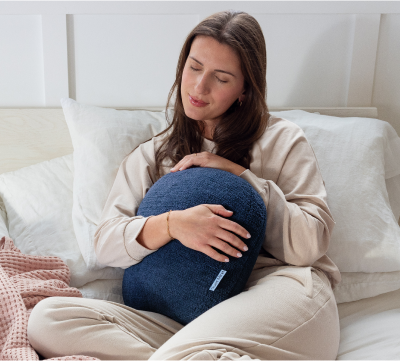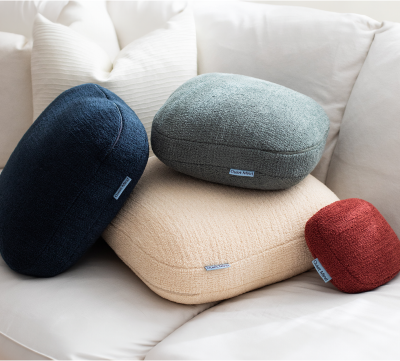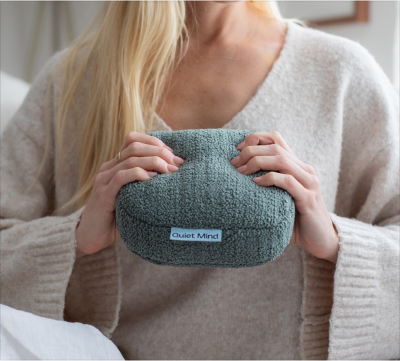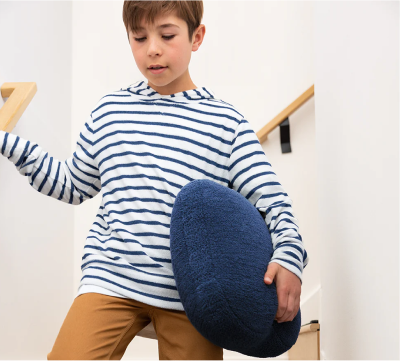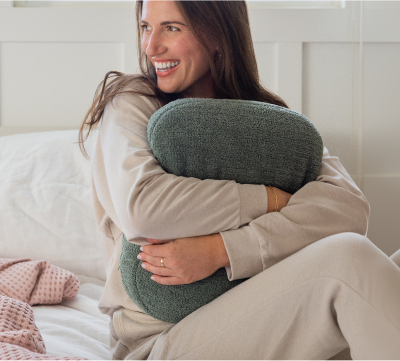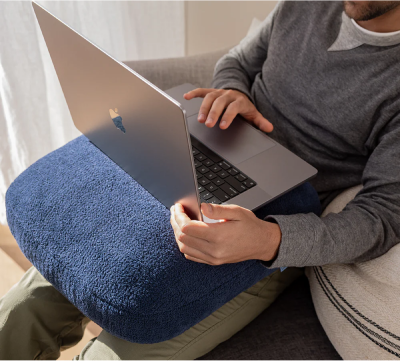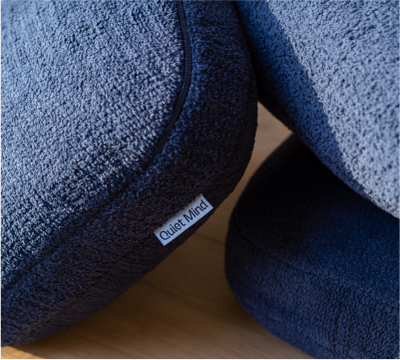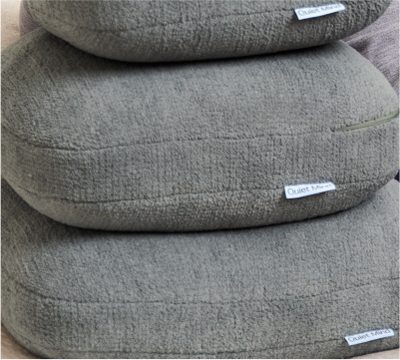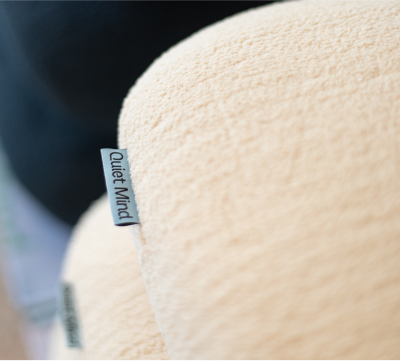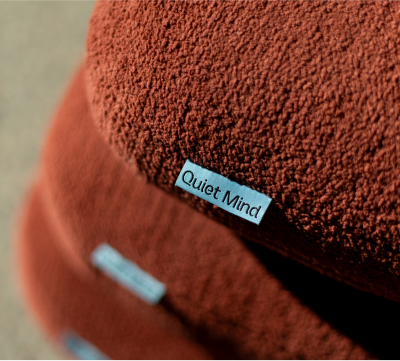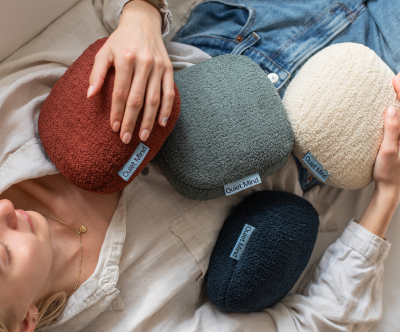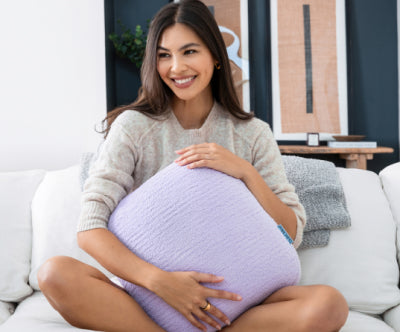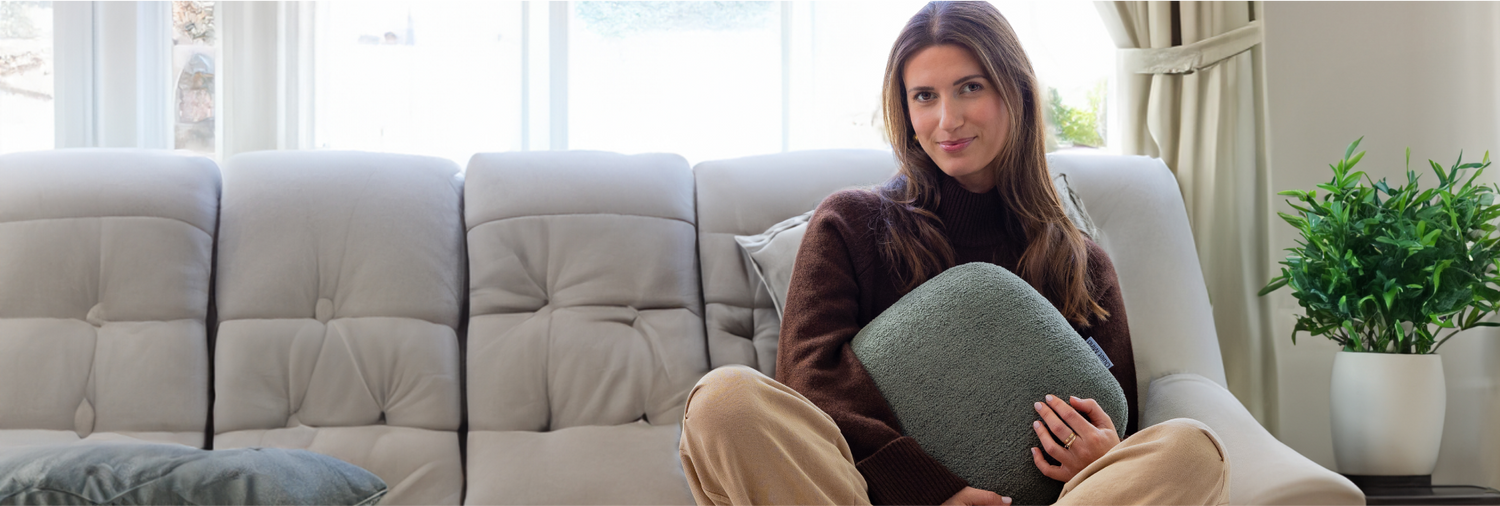Imagine the comfort of being wrapped tightly in a big, reassuring hug. It makes you feel safe, secure, centered, and calm. That’s why we instinctively move in for a hug from a loved one when we’re feeling anxious, stressed, or overstimulated. Deep pressure stimulation gives you that same feel-good sensation!
Deep Pressure Stimulation, or DPS, simulates the soothing effects of being hugged or squeezed. It can be used anytime and anywhere to help adults and children with ADHD achieve a sense of calm. Let’s take a deep dive into how deep-pressure stimulation works for ADHD, why it’s recommended for managing ADHD symptoms, and how to use it at home or on the go.

Can Deep Pressure Stimulation Help with ADHD?
Absolutely! Deep Pressure Stimulation (DPS) is an effective way to relieve the symptoms of ADHD naturally! Deep touch pressure, such as that applied by the Original Weighted Pillow, helps with attention deficit hyperactivity disorder by stimulating the release of serotonin and other neurotransmitters, which have a naturally calming effect on the central nervous system.
The Science Behind Deep Pressure Stimulation for ADHD
If you’ve ever wished for a safe and effective way to help yourself or your ADHD child feel more calm and focused, deep pressure stimulation may be the answer you’re looking for. Let’s explore the science behind deep-pressure stimulation and how it can be a transformative tool for people with ADHD.
What is Deep Pressure Stimulation and How Does It Work?
Deep pressure stimulation is a form of occupational therapy that applies gentle pressure to various body parts. Similar to a hug, swaddle, or firm squeeze, deep pressure therapy relaxes the central nervous system by promoting the release of neurotransmitters in the brain.
In a nutshell, deep pressure stimulation works by stimulating the release of serotonin and oxytocin, which have a calming effect on the sympathetic nervous system - your body’s fight-or-flight response. DPS stimulates the release of happy hormones by the parasympathetic nervous system, and the need for ‘fight or flight’ decreases.
Serotonin is a hormone that regulates sleep. It is also linked to aggression and impulse control. Oxytocin, often called the happiness hormone, triggers feelings of peace and calm. When deep touch pressure mimics the sensation of a hug or firm squeeze, the release of these hormones into the bloodstream causes the body to relax and destress.
The Role of Sensory Processing in ADHD
There are so many distractions in today’s busy world; it’s no wonder many struggle with concentration and focus. Between constant texts, social media, and email, cell phones make it nearly impossible to turn off the outside world.
Not to mention the noise and distractions of a crowded classroom or a busy workplace. These sensory processing challenges make it tremendously difficult for kids and adults with ADHD, autism, and other sensory processing disorders to concentrate and focus on everyday tasks.
Sensory processing issues are common in ADHD. To cope, adults and children with ADHD may withdraw from sensory stimulation, such as light, sound, and touch. Or, they may do the exact opposite and seek out sensory stimulation in the form of movement or noise.
While many of us can process and adapt to sensory stimulation in our daily lives, those with ADHD are unable to adjust. They easily become distracted by sound and movement, which translates to challenges in the classroom, at work, and many other aspects of daily life.
How Deep Pressure Stimulation Works for ADHD
Have you ever heard the term “Runner’s High?” It’s a common feeling experienced by runners due to the release of dopamine in the brain, which is stimulated by cardiovascular activity. Deep-pressure stimulation works for ADHD in a similar way by changing the chemistry in the brain, promoting a calming, focusing effect.
Adults and kids with ADHD often struggle with focus and self-regulation. Deep pressure stimulation offers a grounding sensation that reduces hyperactivity and improves attention span. It works by triggering the release of serotonin, oxytocin, norepinephrine, and epinephrine in the brain through pressure applied strategically to the body.
Using a simple yet powerful tool like a weighted pillow, children and adults with ADHD can utilize deep-pressure stimulation anywhere - even at work or in the classroom - to discreetly overcome sensory overload and overstimulation.
DPS also offers a safe and natural alternative to medication for improving focus and concentration with ADHD, as well as restlessness and the need to be constantly in motion. Studies have shown that deep touch pressure helps people with ADHD feel calmer, more relaxed, and less anxious.
Deep pressure stimulation can be used to produce a calming and relaxing effect in individuals with ADHD, autism spectrum disorder, and pervasive developmental disorder. Beyond that, deep touch pressure therapy can improve sleep quality, reduce anxiety, and enhance well-being for neurodivergent adults and children.
The Benefits of Deep Pressure Stimulation for ADHD
The benefits of deep pressure stimulation for attention deficit hyperactivity disorder in children and adults are wide-ranging. Here are the highlights:
- Reduced stress and anxiety
- An overall sense of calmness
- Improved sleep quality
- Promotes a better mood
- Enhanced focus and concentration
- Reduced hyperactivity, impulsivity, and restlessness
- Sensory overload management
- Enhanced self-regulation
- Discreet and portable
- Natural alternative to medication
How to Use Deep Pressure Stimulation for ADHD
So, how can the use of deep pressure stimulation for ADHD be incorprated into daily life. One of the most practical ways is through the use of a weighted pillow. At home, a weighted pillow can be used as a lap desk, hugged, or placed in your lap or across your chest to enhance relaxation, regain focus, or ease anxiety. Or, use it at night to promote a more restfull night’s sleep.
A weighted pillow can also be taken to work or school to discreetly offer the support of deep pressure stimulation whenever needed. Place it in your lap to provide a calming effect and to improve concentration without disrupting those around you.
A weighted pillow can also be used in the car or on a plane to make travel more soothing and manageable for adults and children with ADHD. It’s an excellent alternative to weighted blankets, weighted vests, and other deep pressure tools that may not be suitable for some individuals.
Incorporating DPS into different settings can be a flexible way to manage ADHD symptoms. Expeperiment with various methods to find what works best for your or your child’s unique needs.
Deep Pressure Stimulation as a Supportive Therapy for ADHD
Deep pressure stimulation can also be used asa safe and effective supportive therapy alongside lifestyle changes and conventional treatments for ADHD, including medication or cognitive-behavioral therapy. Work with your healthcare provider to tailor an individualized treatment plan that promotes a well-rounded approach to ADHD management.
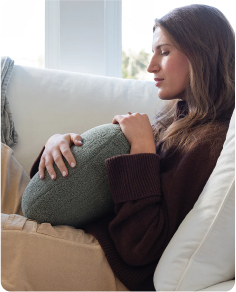
- Emma S
The Impact of Deep Pressure Stimulation on ADHD Management
Deep pressure stimulation is a simple yet powerful tool for people with sensory processing disorders like ADHD. It’s also a game changer for managing the anxiety, stress, insomnia, restlessness, and lack of self-control that are hallmarks of attention deficit hyperactivity disorder.
Integrating the Original Weighted Pillow by Quiet Mind into any self-care toolkit for ADHD is a logical step forward. This uanssuming yet effective tool empowers adults and children with ADHD to navigate the demands of daily life with greater ease and resiliance.
Whether used in conjunction with other treatments or as a standalone tool, deep pressure stimulation offers a more comprehensive and personalized approach to ADHD management.
